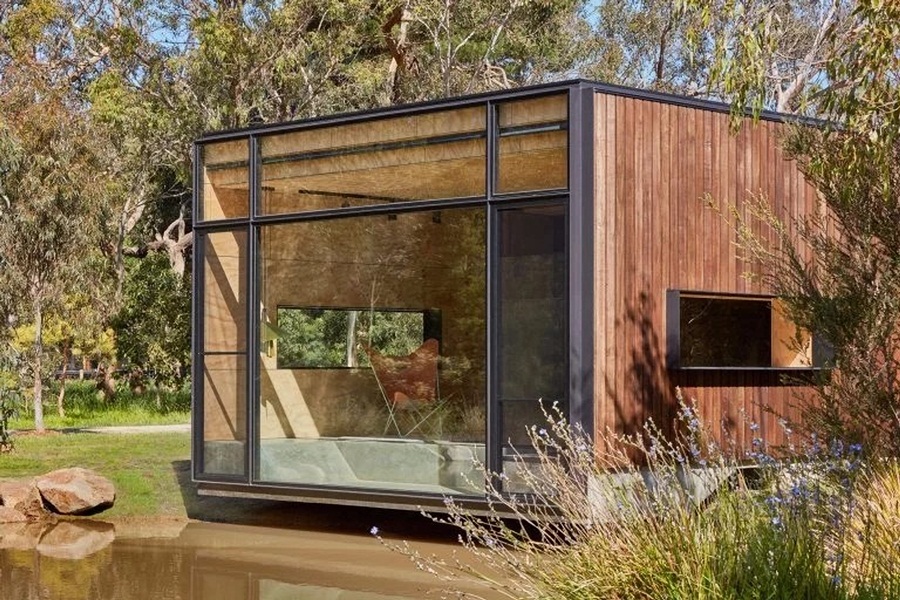Amid rapid urbanization, land resources are becoming increasingly scarce, and people’s demands for living spaces are constantly evolving. Capsule House, a living concept originating from Japan, has gradually entered the public eye with its unique design philosophy and efficient use of space, making it an innovator in future living concepts.
1. The Origin and Development of Capsule House
The concept of Capsule House was first proposed by Japanese architect Kisho Kurokawa in 1972. His design of the Nakagin Capsule Tower, which still stands today in Tokyo, is one of the city’s iconic structures. The initial intention behind this residential model was to adapt to the fast-paced urban life by providing maximum comfort within the smallest space possible.
2. The Design Philosophy of Capsule House
The design philosophy of Capsule House is “less is more.” Although each capsule unit is limited in space, they are meticulously designed to meet basic living needs. This design concept not only reflects the ultimate use of space but also embodies a life attitude that is simple yet not simplistic.
3. Design Features of Capsule House
- Compact and Efficient: Each capsule unit is typically only a few square meters but is equipped with essential furniture such as a bed, storage cabinet, and work desk.
- Modular Design: Capsule units can be combined according to the needs of the residents to form different living space layouts.
- Eco-friendly Materials: Capsule units are usually constructed using lightweight, eco-friendly materials such as aluminum alloy and plastic.
- Smart Systems: Many Capsule Houses also integrate smart home technology, such as automatic light and temperature adjustment.
4. Advantages and Challenges of Capsule House
- Advantages:
- Space-Saving: In cities where land resources are tight, Capsule House provides a space-saving living solution.
- Cost-Effective: Compared to traditional housing, the construction and maintenance costs of capsule housing are lower.
- Adaptable: Suitable for single people, small families, or those who need to move frequently.
- Challenges:
- Privacy: Due to limited space, the privacy of capsule housing may not be as good as traditional housing.
- Social Spaces: Capsule housing may lack sufficient public spaces, such as living rooms and kitchens.
5. Practical Application Cases of Capsule House
There are many successful Capsule House cases around the world. For example:
- K capsule in Japan: A capsule hotel in Tokyo that provides affordable accommodation options.
- CityHub in the Netherlands: A new type of urban hotel that combines capsule accommodation with social spaces.
- YourCube in the United States: A modular living solution that can be quickly assembled and disassembled according to needs.
6. Future Development Trends of Capsule House
With the development of technology and the diversification of living needs, Capsule House is expected to become a new trend in urban living. Future Capsule Houses may be more intelligent and personalized, while also considering the social and emotional needs of residents more.
7. The Design Philosophy of Capsule House and Its Implications for Traditional Housing
The design philosophy of Capsule House also offers many insights for traditional housing, such as:
- Space Utilization: How to efficiently use limited space to provide a comfortable living environment.
- Eco-friendly Materials: How to choose environmentally friendly, sustainable materials to reduce the impact on the environment.
- Smart Systems: How to use smart home technology to improve the convenience and comfort of living.
8. The Social and Cultural Significance of Capsule House
Capsule House is not just an architectural form; it also represents a life attitude and set of values. It encourages people to abandon unnecessary material pursuits and focus on the essence of life. At the same time, it also reflects modern society’s emphasis on personal space and privacy.
9. The Integration of Capsule House with the Sharing Economy
With the rise of the sharing economy, Capsule House has also begun to integrate with the sharing economy, forming a new living model. For example, some capsule hotels not only provide accommodation services but also shared workspaces, gyms, and entertainment facilities. This model not only meets modern people’s pursuit of individuality and flexibility but also achieves resource sharing and optimization.
10. Sustainability Analysis of Capsule House
From a sustainable development perspective, Capsule House has many advantages. Firstly, its construction and maintenance costs are low, which can reduce the consumption of natural resources. Secondly, capsule units usually use environmentally friendly materials, which can reduce the impact on the environment. In addition, many Capsule Houses also adopt energy-saving technologies, such as solar energy and smart lighting systems, to further reduce energy consumption.
11. User Experience Research of Capsule House
User experience is a key factor in measuring the success of Capsule House. Research shows that user satisfaction with Capsule House is influenced by various factors, including the design quality of the capsule unit, the ease of use of the smart system, and the comfort of the public space. Therefore, designers need to consider these factors comprehensively to provide the best user experience.
12. Global Case Analysis of Capsule House
Capsule House cases around the world each have their own characteristics, reflecting differences in culture and lifestyle. For example, Japanese Capsule Houses usually emphasize simplicity and privacy, while European and American cases pay more attention to social space and personalized design. By analyzing these cases, we can better understand the adaptability and development potential of Capsule House in different cultural backgrounds.
13. Business Model Discussion of Capsule House
The business model of Capsule House is also worth discussing. In addition to the traditional sales and rental models, some Capsule Houses have adopted the sharing economy model, such as Airbnb and other online short-term rental platforms. In addition, some Capsule Houses are also combined with hotels, shared office spaces, and other formats, forming a diversified business model.
14. Technological Innovation of Capsule House
Technological innovation is an important force driving the development of Capsule House. For example, 3D printing technology can be used to quickly construct capsule units and reduce costs; smart home systems can improve the convenience and comfort of living; virtual reality technology can be used to simulate and optimize the internal space design of capsule units.
15. Social Impact Assessment of Capsule House
Finally, we also need to assess the impact of Capsule House on society. On the one hand, it provides new ideas for solving urban living problems; on the other hand, it may also bring some challenges, such as the impact on the traditional housing market and urban planning. Therefore, we need to consider the pros and cons of Capsule House comprehensively to achieve sustainable development.
Conclusion
Capsule House, as an innovative living model, is gradually attracting attention worldwide. It is not only an optimization of living space but also a challenge and innovation to traditional living concepts. With the continuous advancement of urbanization, Capsule House may become the mainstream choice for future living.
If you are interested in Capsule House or want to learn more about future living concepts, please visit our website or contact us. Let’s explore the infinite possibilities of living space together!



Comments (0)